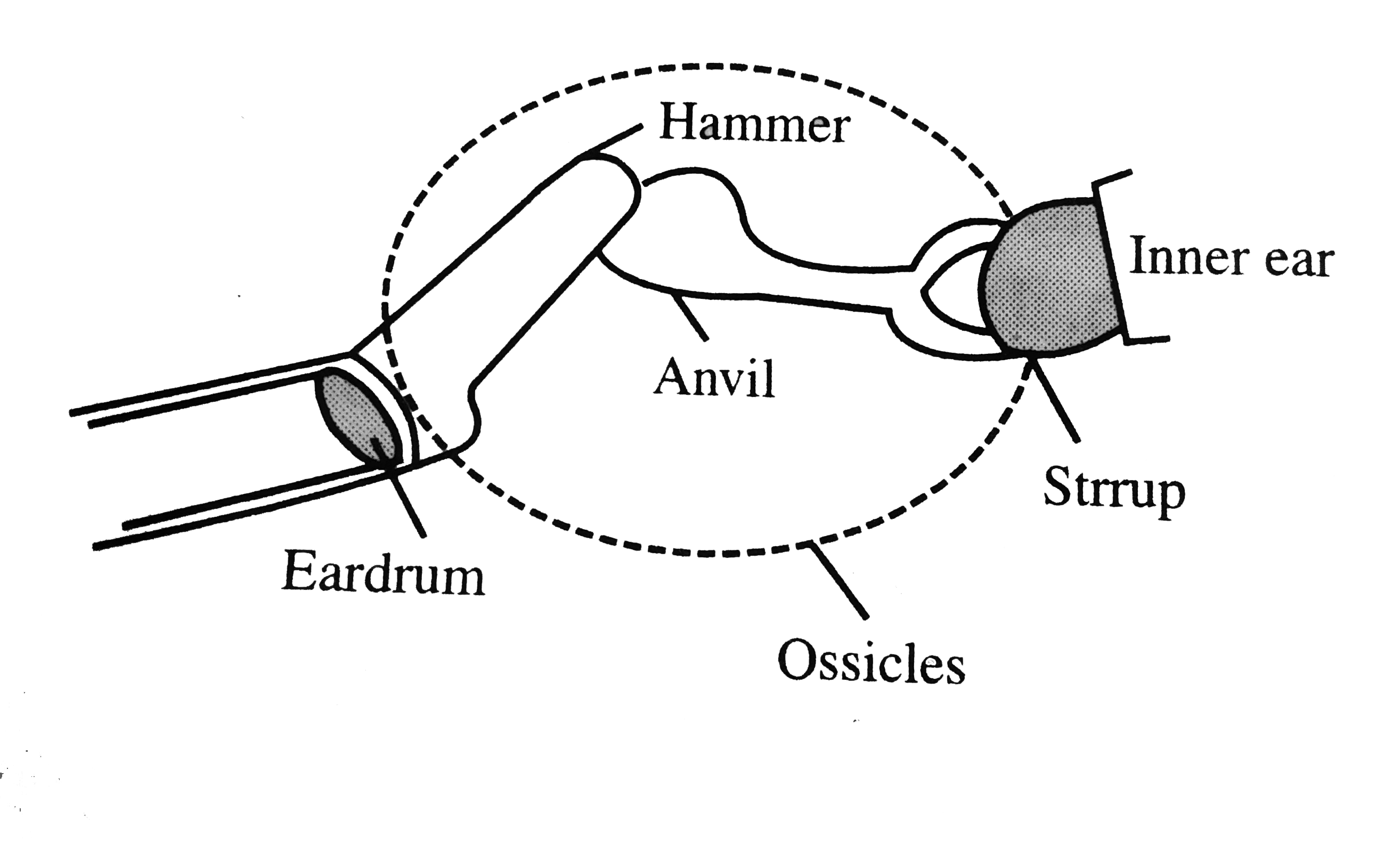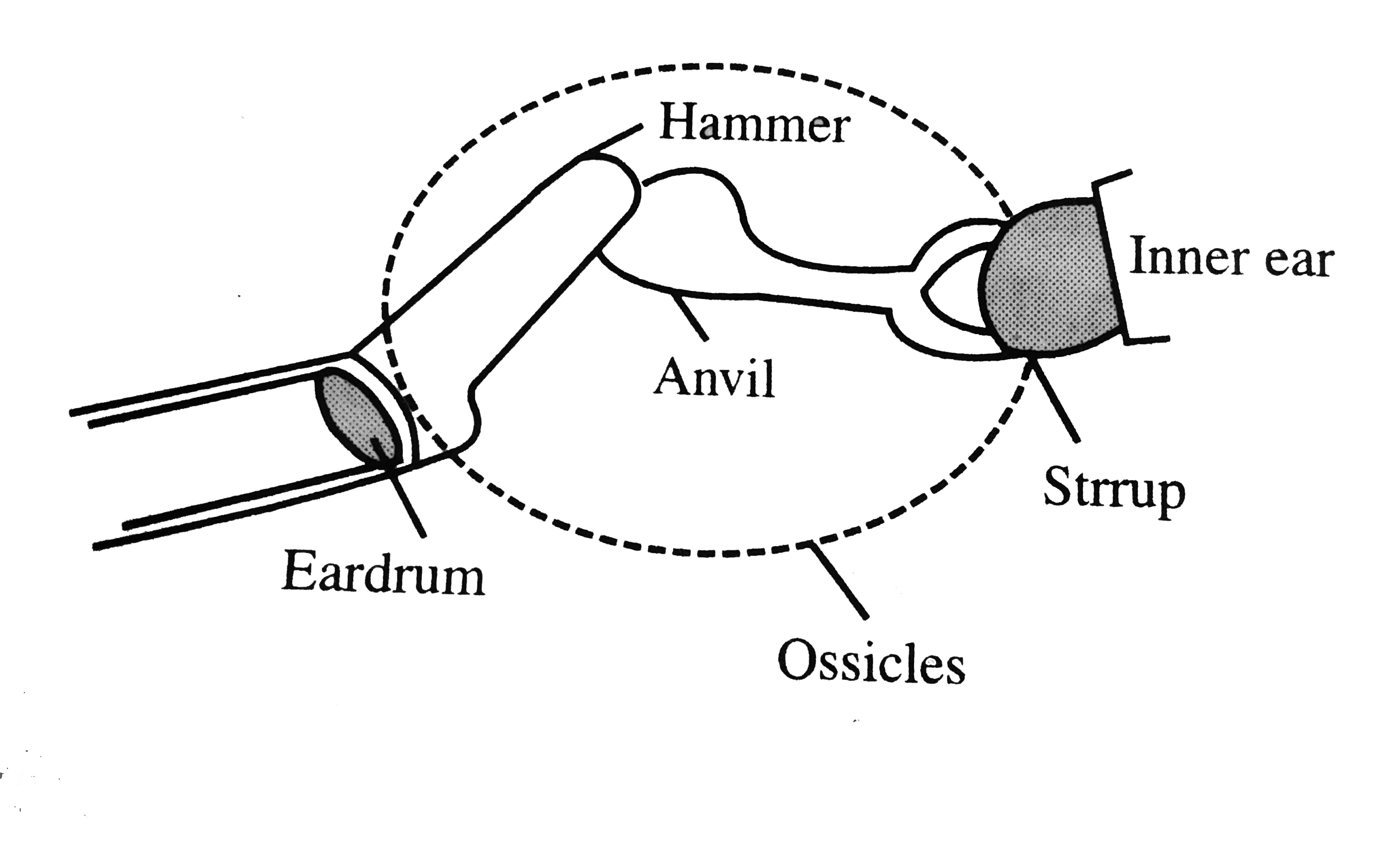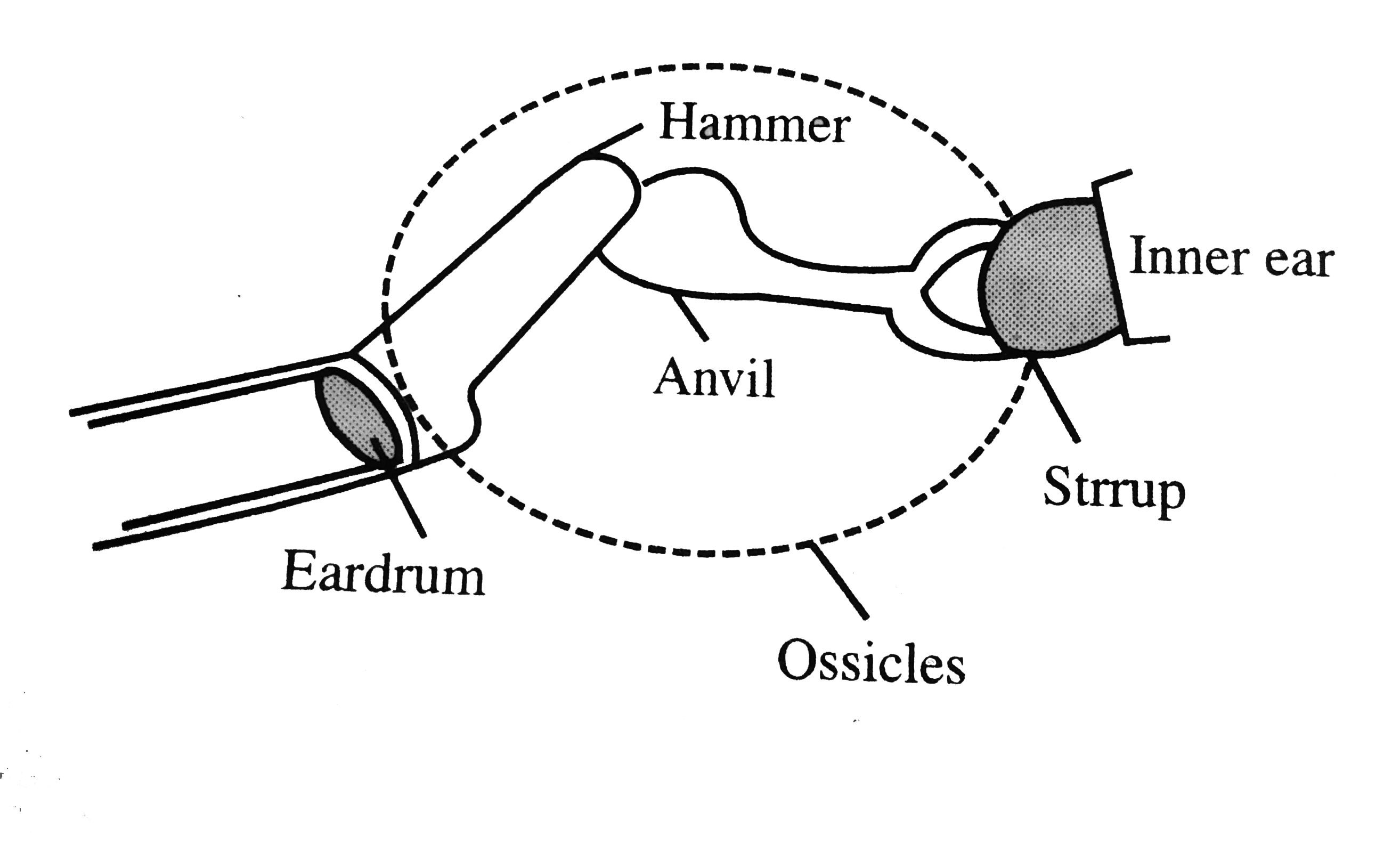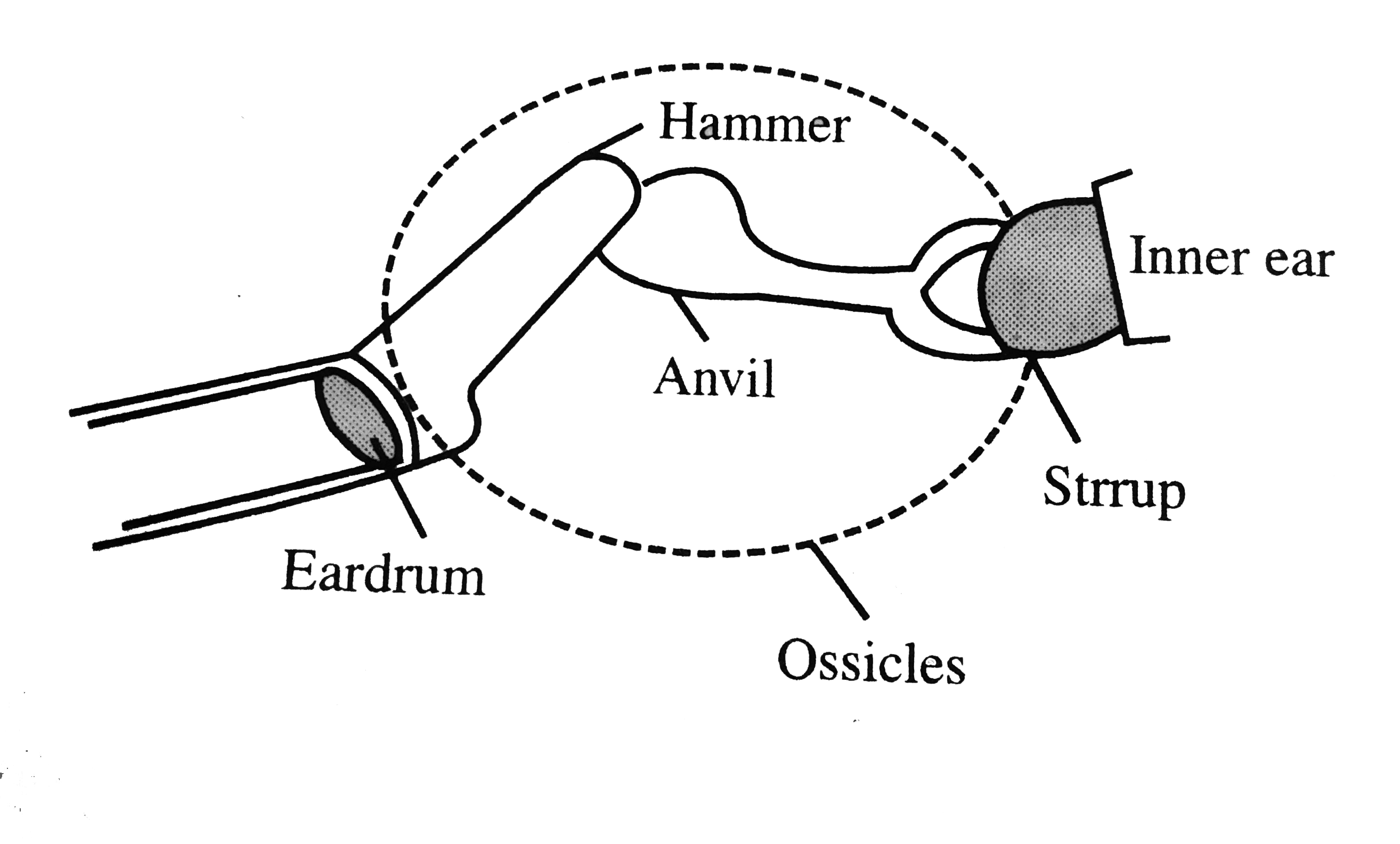A fruit having an endocarp with sub-epidermal juice sacs or hairs on the inner side of its locules, a spongy white mesocarp and leathery epicarp having oil glands is called
Pome
Pepo
Drupe
Hesperidium
The correct Answer is:D
To identify the type of fruit described in the question, we can follow these steps:
1. Understand the Structure of the Fruit:
- The fruit has three layers: the epicarp (outer layer), mesocarp (middle layer), and endocarp (inner layer).
- The endocarp has sub-epidermal juice sacs or hairs on the inner side of its locules.
2. Analyze the Characteristics of Each Layer:
- Epicarp: Described as leathery and containing oil glands.
- Mesocarp: Described as spongy and white.
- Endocarp: Contains juice sacs or hairs, indicating a juicy interior.
3. Consider the Options:
- Pome: Incorrect, as it develops from a fleshy thalamus and not described as having the mentioned characteristics.
- Pepo: Incorrect, as it is fleshy throughout and does not match the description.
- Drupe: Incorrect, as it is typically one-seeded with a hard endocarp.
- Hesperidium: Correct, as it is a type of berry with a leathery epicarp, spongy mesocarp, and juicy endocarp with hairs or sacs.
4. Conclusion:
- Based on the analysis, the fruit described in the question is a Hesperidium. Examples include citrus fruits like oranges and lemons.
Final Answer:
The fruit is called Hesperidium.
- The fruit has three layers: the epicarp (outer layer), mesocarp (middle layer), and endocarp (inner layer).
- The endocarp has sub-epidermal juice sacs or hairs on the inner side of its locules.
- Epicarp: Described as leathery and containing oil glands.
- Mesocarp: Described as spongy and white.
- Endocarp: Contains juice sacs or hairs, indicating a juicy interior.
- Pome: Incorrect, as it develops from a fleshy thalamus and not described as having the mentioned characteristics.
- Pepo: Incorrect, as it is fleshy throughout and does not match the description.
- Drupe: Incorrect, as it is typically one-seeded with a hard endocarp.
- Hesperidium: Correct, as it is a type of berry with a leathery epicarp, spongy mesocarp, and juicy endocarp with hairs or sacs.
- Based on the analysis, the fruit described in the question is a Hesperidium. Examples include citrus fruits like oranges and lemons.
The fruit is called Hesperidium.
Similar Questions
[You may begin with : A couple of days later he was walking around .....]
A couple of days later , I was walking around the camp, around the barracks , near the barbed - wire fence where the guards could not easily see . I was alone
On the other side of the fence , I spotted someone : a little girl with light , almost luminous curls. She was half hidden behind a birch tree .
I glanced around to make sure no one saw me. I called to her softly in German . "Do you have something to eat ?".
She didn't understand.
I inched closer to the fence and repeated the question in Polish . She stepped forward. I was thin and gaunt, with rags wrapped around my feet, but the girl looked unafraid . In her eyes , I saw life .
She pulled an apple from her woollen jacket and threw it over the fence.
I grabbed the fruit and , as I started to run away , I heard her say faintly , "I"ll see you tomorrow."
I returned to the same spot by fence at the same time every day . She was always there with something for me to eat -a hunk of bread or better yet , an apple. We didn't dare speak or linger. To be caught would mean death for us both.
I didn't know anything about her , just a kind farm girl , except that she understood Polish .
What was her name ? Why was she risking her life for me ? What was in such short supply , and this girl on the other fence gave me some , as nourishing in its way as the apples.View Solution[You may begin with : My friend was scheduled to die. On May 1945.]
''Don't call me Herman anymore,'' I said to my brother.''Call me 94983.''
I was put to work in the camp's crematorium, loading the dead into a hand-cranked elevator.
I, too, felt dead. Hardened, I had become a number.
Soon my brothers and I were sent to Schlieben, one of Buchenwald's sub-camps near Berlin.
One morning I thought I heard my mother's voice.
''Son,'' she said softly but clearly, ''I am going to send you an angel.''
Then I woke up. Just a dream. A beautiful dream.
But in this place there could be no angels. There was only work. And hunger. And fear.
A couple of days later, I was walking aroung the camp, aroung the barracks, near the barbed-wire fence where the guards could not easily see. I was alone.
On the other side of the fence, I spotted someone : a little girl with light, almost luminous curls. She was half hidden behind a birch tree.
I glanced around to make sure no one saw me. I called to her softly in German. ''Do you have something to eat ?''
She didn't understand.
I inched closer to the fence and repeated the question in Polish. She stepped forward. I was thin and gaunt, with rags wrapped around my feet, but the girl looked unafraid. In her eyes, I saw life.
She pulled an apple from her woollen jacket and threw it over the fence.
I grabbed the fruit and, as I started to run away, I heard her say faintly, ''I'll see you tomorrow.''View Solution
Knowledge Check
- Question 1 - Select One
A fruit having differentiation of epicarp, mesocarp and stony endocarp is
ABerryBDrupeCSycosisDsorosis - Question 2 - Select One

When a sound wave enters the ear, it sets the eardrum into oscillation, which in turn causes oscillation of 3 tiny bones in the middle ear called ossicles. This oscillation is finally transmitted to the fluid filled in inner portion of the ear termed as inner ear, the motion of the fluid disturbs hair cells within the inner ear which transmit nerve impulses to the brain with the information that a sound is present. The theree bones present in the middle ear are named as hammer, anvil and stirrup. Out of these the stirrup is the smallest one and this only connects the middle ear to inner ear as shown in the figure below. The area of stirrup and its extent of connection with the inner ear limits the sensitivity of the human ear consider a person's ear whose moving part of the eardrum has an area of about 50mm2 and the area of stirrup is about 5mm2. The mass of ossicles is negligible. As a result, force exerted by sound wave in air on eardum and ossicles is same as the force exerted by ossicles on the inner ear. Consider a sound wave having maximum pressure fluctuation of 4×10−2Pa from its normal equilibrium pressure value which is equal to 105Pa. Frequency of sound wave in air is 332ms. Velocity of sound wave in fluid (present in inner ear) is 1500ms. Bulk modulus of air is 1.42×105Pa. Bulk modulus of fluid is 2.18×109Pa.
Q. Find the pressure amplitude of given sound wave in the fluid of inner ear.A0.03PaB0.04PaC0.3PaD0.4Pa - Question 3 - Select One

When a sound wave enters the ear, it sets the eardrum into oscillation, which in turn causes oscillation of 3 tiny bones in the middle ear called ossicles. This oscillation is finally transmitted to the fluid filled in inner portion of the ear termed as inner ear, the motion of the fluid disturbs hair cells within the inner ear which transmit nerve impulses to the brain with the information that a sound is present. The three bones present in the middle ear are named as hammer, anvil and stirrup. Out of these the stirrup is the smallest one and this only connects the middle ear to inner ear as shown in the figure below. The area of stirrup and its extent of connection with the inner ear limits the sensitivity of the human ear consider a person's ear whose moving part of the eardrum has an area of about 50mm2 and the area of stirrup is about 5mm2. The mass of ossicles is negligible. As a result, force exerted by sound wave in air on eardrum and ossicles is same as the force exerted by ossicles on the inner ear. Consider a sound wave having maximum pressure fluctuation of 4×10−2Pa from its normal equilibrium pressure value which is equal to 105Pa. Frequency of sound wave in air is 332ms. Velocity of sound wave in fluid (present in inner ear) is 1500ms. Bulk modulus of air is 1.42×105Pa. Bulk modulus of fluid is 2.18×109Pa.
Q. Find the displacement amplitude of given sound wave in the fluid of inner ear.A4.4×10−11mB8×1011mC3.65×10−11mD8.1×10−12m
READ THE FOLLOWING PASSAGE CAREFULLY: 1. THERE ARE TWO TYPES OF DIABETES, INSULIN DEPENDENT, AND NON-INSULIN DEPENDENT. 90-95% OF THE ESTIMATED 13-14 MILLION PEOPLE IN THE UNITED STATES WITH DIABETES HAVE NON-INSULIN DEPENDENT, OR TYPE II DIABETES. BECAUSE THIS TYPE OF DIABETES USUALLY BEGINS IN ADULTS OVER THE AGE OF 40 AND IS MOST COMMON AFTER THE AGE OF 55, IT USED TO BE CALLED ADULT-ONSET DIABETES, ITS SYMPTOMS OFTEN DEVELOP GRADUALLY AND ARE HARD TO IDENTIFY AT FIRST, THEREFORE NEARLY HALF OF ALL THE PEOPLE WITH DIABETES DO NOT KNOW IT. SO, SOMEONE WHO HAS DEVELOPED TYPE II DIABETES MAY FEEL TIRED OR ILL WITHOUT KNOWING WHY. THIS CAN BE PARTICULARLY DANGEROUS BECAUSE UNTREATED DIABETES CAN CAUSE DAMAGE TO THE HEART, BLOOD VESSELS, EYES, KIDNEYS, AND NERVES. WHILE THE CAUSES, SHORT-TERM EFFECTS, AND TREATMENTS OF THE TWO TYPES OF DIABETES DIFFER, BOTH TYPES CAN CAUSE LONG-TERM HEALTH PROBLEMS. 2. MOST IMPORTANTLY, BOTH TYPES AFFECT THE BODY’S ABILITY TO USE DIGESTED FOOD FOR ENERGY. DIABETES DOES NOT INTERFERE WITH DIGESTION, BUT IT DOES PREVENT THE BODY FROM USING AN IMPORTANT PRODUCT OF DIGESTION, GLUCOSE, FOR ENERGY. AFTER A MEAL, THE NORMAL DIGESTIVE SYSTEM BREAKS SOME FOOD DOWN INTO GLUCOSE. THE BLOOD CARRIES THE GLUCOSE OR SUGAR THROUGHOUT THE BODY, CAUSING BLOOD GLUCOSE LEVELS TO RISE. IN RESPONSE TO THIS, INSULIN IS RELEASED INTO THE BLOODSTREAM AND SIGNALS THE BODY TISSUES TO METABOLIZE OR BURN THE GLUCOSE FOR FUEL, WHICH CAUSES BLOOD GLUCOSE LEVELS TO RETURN TO NORMAL. THE GLUCOSE THAT THE BODY DOES NOT USE IS STORED IN THE LIVER, MUSCLE OR FAT. 3. IN BOTH TYPES OF DIABETES, THE NORMAL FUNCTION OF GLANDS IS AFFECTED. A GLAND CALLED PANCREAS MAKES INSULIN. IN PEOPLE WITH INSULIN-DEPENDENT DIABETES, THE PANCREAS DOES NOT PRODUCE INSULIN AT ALL. PEOPLE WITH NON-INSULIN DEPENDENT DIABETES USUALLY PRODUCE SOME INSULIN IN THEIR PANCREAS, BUT THEIR BODY TISSUES DO NOT METABOLIZE THE GLUCOSE PROPERTY, A CONDITION KNOWN AS INSULIN RESISTANCE. 4. THERE’S NO CURE FOR DIABETES YET. HOWEVER, THERE ARE WAYS TO GET RELIEF FROM ITS SYMPTOMS. FOODS THAT ARE RICH IN CARBOHYDRATES BREAK DOWN INTO GLUCOSE DURING DIGESTION, CAUSING BLOOD GLUCOSE TO RISE. ALSO, STUDIES HAVE SHOWN THAT COOKED FOODS RAISE BLOOD GLUCOSE HIGHER THAN RAW, UNPEELED FOODS. SO WE SHOULD EAT SUCH UNCOOKED WHOLE GRAIN FOODS. ON THE BASIS OF YOUR READING OF THE ABOVE PASSAGE, MAKE NOTES ON IT USING HEADINGS AND SUB-HEADINGS. USE RECOGNIZABLE ABBREVIATIONS WHEREVER NECESSARY (MINIMUM FOUR).
View SolutionREAD THE FOLLOWING PASSAGE CAREFULLY: 1. THERE ARE TWO TYPES OF DIABETES, INSULIN DEPENDENT, AND NON-INSULIN DEPENDENT. 90-95% OF THE ESTIMATED 13-14 MILLION PEOPLE IN THE UNITED STATES WITH DIABETES HAVE NON-INSULIN DEPENDENT, OR TYPE II DIABETES. BECAUSE THIS TYPE OF DIABETES USUALLY BEGINS IN ADULTS OVER THE AGE OF 40 AND IS MOST COMMON AFTER THE AGE OF 55, IT USED TO BE CALLED ADULT-ONSET DIABETES, ITS SYMPTOMS OFTEN DEVELOP GRADUALLY AND ARE HARD TO IDENTIFY AT FIRST, THEREFORE NEARLY HALF OF ALL THE PEOPLE WITH DIABETES DO NOT KNOW IT. SO, SOMEONE WHO HAS DEVELOPED TYPE II DIABETES MAY FEEL TIRED OR ILL WITHOUT KNOWING WHY. THIS CAN BE PARTICULARLY DANGEROUS BECAUSE UNTREATED DIABETES CAN CAUSE DAMAGE TO THE HEART, BLOOD VESSELS, EYES, KIDNEYS, AND NERVES. WHILE THE CAUSES, SHORT-TERM EFFECTS, AND TREATMENTS OF THE TWO TYPES OF DIABETES DIFFER, BOTH TYPES CAN CAUSE LONG-TERM HEALTH PROBLEMS. 2. MOST IMPORTANTLY, BOTH TYPES AFFECT THE BODY’S ABILITY TO USE DIGESTED FOOD FOR ENERGY. DIABETES DOES NOT INTERFERE WITH DIGESTION, BUT IT DOES PREVENT THE BODY FROM USING AN IMPORTANT PRODUCT OF DIGESTION, GLUCOSE, FOR ENERGY. AFTER A MEAL, THE NORMAL DIGESTIVE SYSTEM BREAKS SOME FOOD DOWN INTO GLUCOSE. THE BLOOD CARRIES THE GLUCOSE OR SUGAR THROUGHOUT THE BODY, CAUSING BLOOD GLUCOSE LEVELS TO RISE. IN RESPONSE TO THIS, INSULIN IS RELEASED INTO THE BLOODSTREAM AND SIGNALS THE BODY TISSUES TO METABOLIZE OR BURN THE GLUCOSE FOR FUEL, WHICH CAUSES BLOOD GLUCOSE LEVELS TO RETURN TO NORMAL. THE GLUCOSE THAT THE BODY DOES NOT USE IS STORED IN THE LIVER, MUSCLE OR FAT. 3. IN BOTH TYPES OF DIABETES, THE NORMAL FUNCTION OF GLANDS IS AFFECTED. A GLAND CALLED PANCREAS MAKES INSULIN. IN PEOPLE WITH INSULIN-DEPENDENT DIABETES, THE PANCREAS DOES NOT PRODUCE INSULIN AT ALL. PEOPLE WITH NON-INSULIN DEPENDENT DIABETES USUALLY PRODUCE SOME INSULIN IN THEIR PANCREAS, BUT THEIR BODY TISSUES DO NOT METABOLIZE THE GLUCOSE PROPERTY, A CONDITION KNOWN AS INSULIN RESISTANCE. 4. THERE’S NO CURE FOR DIABETES YET. HOWEVER, THERE ARE WAYS TO GET RELIEF FROM ITS SYMPTOMS. FOODS THAT ARE RICH IN CARBOHYDRATES BREAK DOWN INTO GLUCOSE DURING DIGESTION, CAUSING BLOOD GLUCOSE TO RISE. ALSO, STUDIES HAVE SHOWN THAT COOKED FOODS RAISE BLOOD GLUCOSE HIGHER THAN RAW, UNPEELED FOODS. SO WE SHOULD EAT SUCH UNCOOKED WHOLE GRAIN FOODS. ON THE BASIS OF YOUR READING OF THE ABOVE PASSAGE, MAKE NOTES ON IT USING HEADINGS AND SUB-HEADINGS. USE RECOGNIZABLE ABBREVIATIONS WHEREVER NECESSARY (MINIMUM FOUR).
View Solution
When a sound wave enters the ear, it sets the eardrum into oscillation, which in turn causes oscillation of 3 tiny bones in the middle ear called ossicles. This oscillation is finally transmitted to the fluid filled in inner portion of the ear termed as inner ear, the motion of the fluid disturbs hair cells within the inner ear which transmit nerve impulses to the brain with the information that a sound is present. The theree bones present in the middle ear are named as hammer, anvil and stirrup. Out of these the stirrup is the smallest one and this only connects the middle ear to inner ear as shown in the figure below. The area of stirrup and its extent of connection with the inner ear limits the sensitivity of the human ear consider a person's ear whose moving part of the eardrum has an area of about 50mm2 and the area of stirrup is about 5mm2. The mass of ossicles is negligible. As a result, force exerted by sound wave in air on eardum and ossicles is same as the force exerted by ossicles on the inner ear. Consider a sound wave having maximum pressure fluctuation of 4×10−2Pa from its normal equilibrium pressure value which is equal to 105Pa. Frequency of sound wave in air is 332ms. Velocity of sound wave in fluid (present in inner ear) is 1500ms. Bulk modulus of air is 1.42×105Pa. Bulk modulus of fluid is 2.18×109Pa.
Q. If the person is using an hearing aid, which increase the intensity of given sound wave change as perceived by inner ear?View Solution
When a sound wave enters the ear, it sets the eardrum into oscillation, which in turn causes oscillation of 3 tiny bones in the middle ear called ossicles. This oscillation is finally transmitted to the fluid filled in inner portion of the ear termed as inner ear, the motion of the fluid disturbs hair cells within the inner ear which transmit nerve impulses to the brain with the information that a sound is present. The theree bones present in the middle ear are named as hammer, anvil and stirrup. Out of these the stirrup is the smallest one and this only connects the middle ear to inner ear as shown in the figure below. The area of stirrup and its extent of connection with the inner ear limits the sensitivity of the human ear consider a person's ear whose moving part of the eardrum has an area of about 50mm2 and the area of stirrup is about 5mm2. The mass of ossicles is negligible. As a result, force exerted by sound wave in air on eardum and ossicles is same as the force exerted by ossicles on the inner ear. Consider a sound wave having maximum pressure fluctuation of 4×10−2Pa from its normal equilibrium pressure value which is equal to 105Pa. Frequency of sound wave in air is 332ms. Velocity of sound wave in fluid (present in inner ear) is 1500ms. Bulk modulus of air is 1.42×105Pa. Bulk modulus of fluid is 2.18×109Pa.
Q. This person (without hearing aid machine) is sitting inside a busy restaurant where average sound intensity is 3.2×10−5Wm2. How much energy in the form of sound is taken up by the person in his meal time of 1 h?View Solution
When a sound wave enters the ear, it sets the eardrum into oscillation, which in turn causes oscillation of 3 tiny bones in the middle ear called ossicles. This oscillation is finally transmitted to the fluid filled in inner portion of the ear termed as inner ear, the motion of the fluid disturbs hair cells within the inner ear which transmit nerve impulses to the brain with the information that a sound is present. The theree bones present in the middle ear are named as hammer, anvil and stirrup. Out of these the stirrup is the smallest one and this only connects the middle ear to inner ear as shown in the figure below. The area of stirrup and its extent of connection with the inner ear limits the sensitivity of the human ear consider a person's ear whose moving part of the eardrum has an area of about 50mm2 and the area of stirrup is about 5mm2. The mass of ossicles is negligible. As a result, force exerted by sound wave in air on eardum and ossicles is same as the force exerted by ossicles on the inner ear. Consider a sound wave having maximum pressure fluctuation of 4×10−2Pa from its normal equilibrium pressure value which is equal to 105Pa. Frequency of sound wave in air is 332ms. Velocity of sound wave in fluid (present in inner ear) is 1500ms. Bulk modulus of air is 1.42×105Pa. Bulk modulus of fluid is 2.18×109Pa.
Q. With respect to information provided above, mark the correct statement.View Solution

